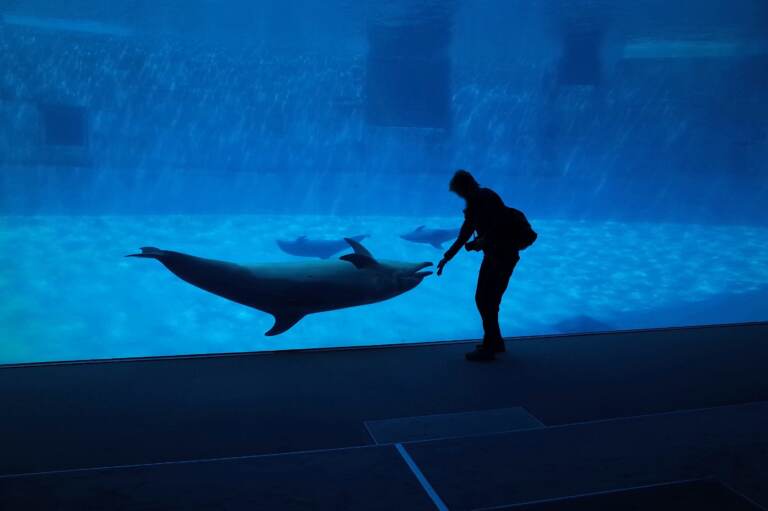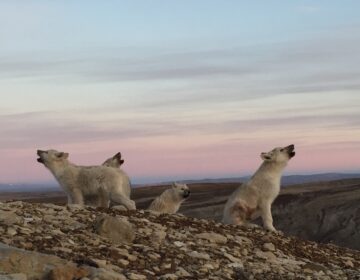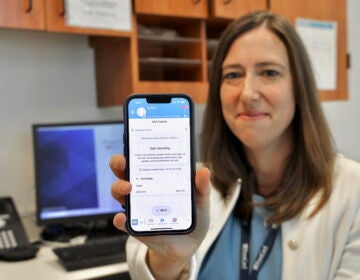Communicating with Animals
Listen 49:11
Humans have long been fascinated by the idea of communicating with other species — not just teaching animals to mimic human words, but truly understanding their calls or cries, and interpreting their meaning. In recent years, new technologies and research are getting us closer to that point. So what are scientists learning about the way animals’ minds work — what they think about, care about, and want us to understand?
On this episode, we explore animal communication — from their ability to speak our language, to our ability to understand theirs. We hear stories about what viral videos of “talking” dogs and cats are teaching scientists, the hidden meanings behind whale songs and dolphin whistles, and how machine learning is decoding the oinks and squeals of pigs.
Also heard on this week’s episode:
- Nicole Cordova says her husky Manson loves to talk — whine, argue, and yell like Chewbacca. We hear about what it’s like living with a chatty canine.
- In 1970, biologist Roger Payne released a haunting album called “Songs of the Humpback Whale” that left listeners spellbound. Fifty years later, what have we learned about what those songs mean? We talk with nature documentary filmmaker Tom Mustill — author of the recent book “How to Speak Whale” — about what scientists have discovered.
- We talk with Justin Gregg, a researcher at the Dolphin Communication Project, about what dolphin clicks and whistles mean, how their communication differs from human language, and what we’re learning about what matters to dolphins.
- When pigs oink, grunt, or snort, does it mean they feel good or bad? That’s the question Élodie Briefer, an animal cognition expert who teaches biology at the University of Copenhagen, is trying to answer. She tells us what machine learning is uncovering about the feelings behind these vocalizations, and how it can help livestock farmers and inspectors improve pigs’ lives.
Segments from this episode
WHYY is your source for fact-based, in-depth journalism and information. As a nonprofit organization, we rely on financial support from readers like you. Please give today.






